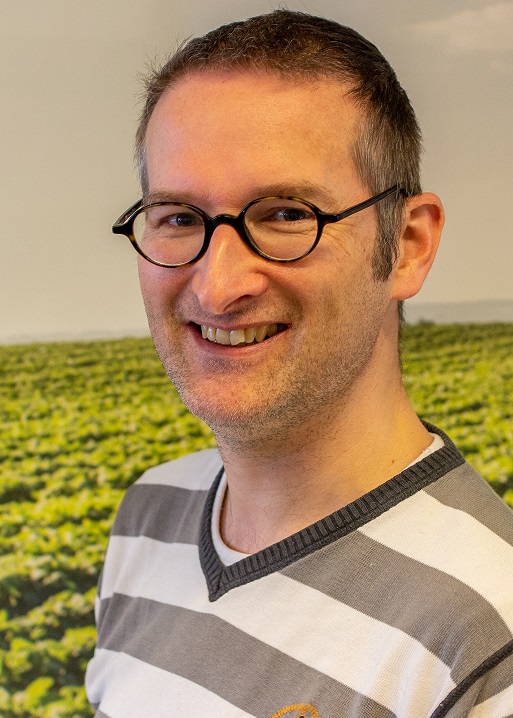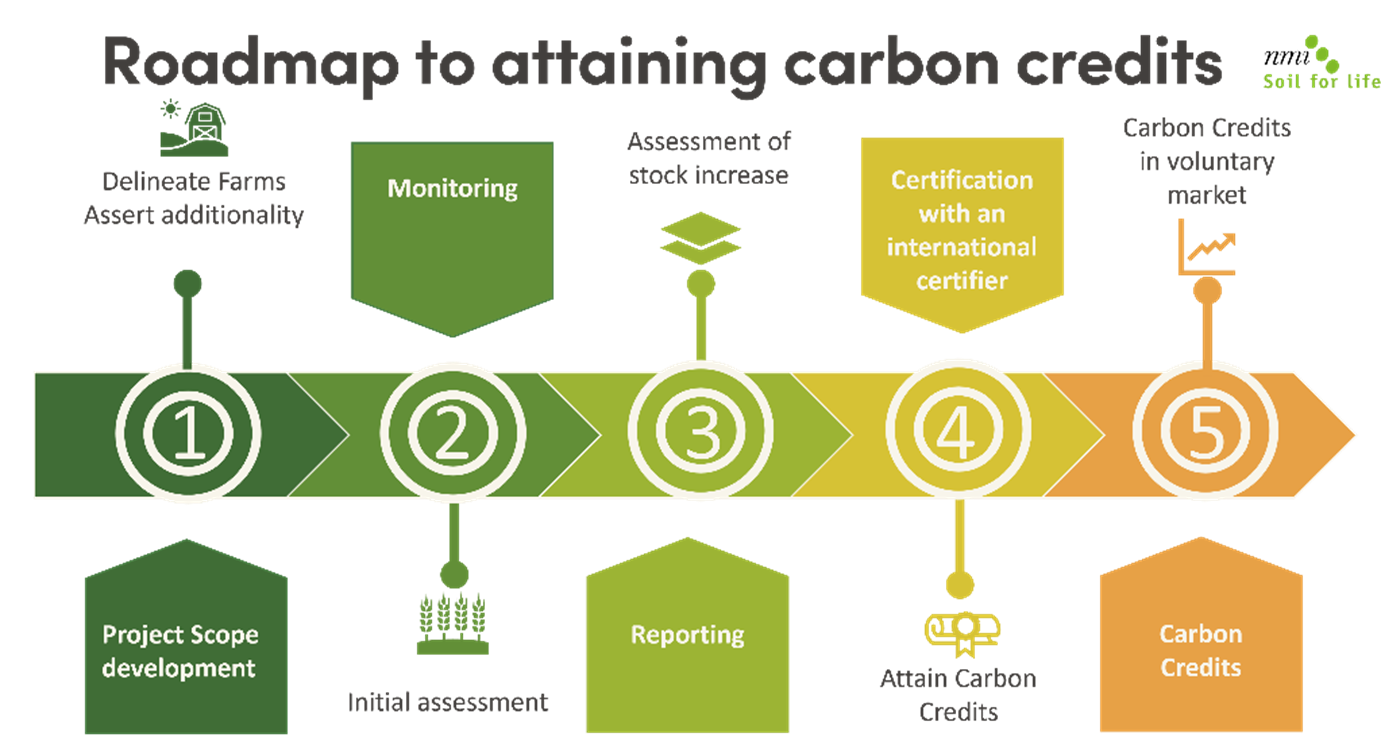A Scientific Roadmap to Soil Carbon Credits


For the determination of carbon credits it is crucial that they are robustly determined and follows from active and conscious efforts (additionality) and is retained for a long period of time (permanence) (Oldfield et al. 2022). This entire process of Monitoring, Reporting and Verification (MRV) must be scientifically sound and fully retraceable. In this blog we explore the roadmap to carbon credits and the role we have in this rapidly developing field.

Project Scope and Development
Given a desired increase in C stocks it is essential to fit a carbon project to the agro-ecological conditions controlling the potential of soils to sequester carbon. Not only soil type, climate and agronomic practices are driving factors but the proposed measures should preferably improve the current way of farming. An integrative approach is key, so that a boost in carbon not only elevates crop production but also improves soil quality and biodiversity and minimizes the environmental losses of greenhouse gases and nutrients.
Monitoring
The first step towards attaining scientific underpinned soil carbon credits is monitoring: the assessment of the carbon stocks in the soil. This can be done in a myriad of ways, which vary in degrees of technical complexity and cost. Presently combinations of remote (satellite) and proximal sensing data (e.g. with Near InfraRed spectrometers or wet-chemistry labs) are most appropriate to collect the data necessary for attaining carbon credits. Latest studies show that this fusion of proximal and remote sensing methods is desired to avoid huge sampling costs without loosing the desired precision in estimated carbon stocks.
Reporting
The second step involves the documentation and reporting of the additionally sequestered carbon. This involves collecting all data relevant to the carbon offsetting project, provided in a transparent and traceable way which adheres to FAIR-guidelines (Findability, Accessibility, Interoperability, and Reuseablility) (Stall et al. 2019).
Verification & generation of carbon credits
Carbon verifiers (e.g. VCS Verra) are developing robust protocols to ensure soil carbon sequestration in carbon offsetting projects. Project developers can apply for credits leveraging the monitoring and reporting data collected. Projects following these guidelines are verified by independent subject matter experts. Carbon verification bodies then provide carbon credits on the voluntary market which can be sold on the voluntary carbon market.
Scientifically Sound Soil Sequestration
In order to ascertain robust carbon credits, it is necessary to develop scientifically sound protocols. Presently, few checks and balances exist in the verification market and this could potentially lead to problems. Our team has soil scientists, data scientists and policy experts that work on the cutting edge in science to get robust carbon stocks estimates. Furthermore, we are also a stakeholder providing feedback to Verra VCS VMD0042 and Verra VCS VMD0053 protocols on soil carbon, as well as the Dutch local equivalent (Stichting Nationale Koolstofmarkt) to help develop robust protocols. Additionally, our researchers are involved in Horizon2020 proposals to develop sound carbon offsetting guidelines at a European level. Last but not least our scientists lend their expertise on the evaluation of carbon offsetting projects under Verra guidelines.
Decision Support on Farm Level
The best carbon projects are not only using remote and proximate sensors to monitor changes in carbon stocks at farm level, but also focus on decision support to assist land users in the best practices to improve them while enhancing the co-benefits for crop production and environment. All decisions in crop, soil and nutrient management have long-term impact on soil C stocks. Though the calibration and validation of models is challenging, in particular when the decision support is aimed to deliver tailer-made solutions on field level, we see an enormous boost in the number and quality of the models presented. Scientists are currently still struggling with this for accurate underpinning of carbon stocks on farm level, but the applicability (and user friendliness) is increasing rapidly. I am actually curious how the current models evolve to achieve this goal.
Contact us
We're here to answer your questions and help you to get started with soil carbon monitoring
Contact our carbon stock experts
SoilCASTOR enables to measure accurately soil carbon stock at farm level and is developed by NMI, AgroCares and Wageningen University.
Office
Nieuwe Kanaal 7C, 6709 PA Wageningen, The Netherlands
